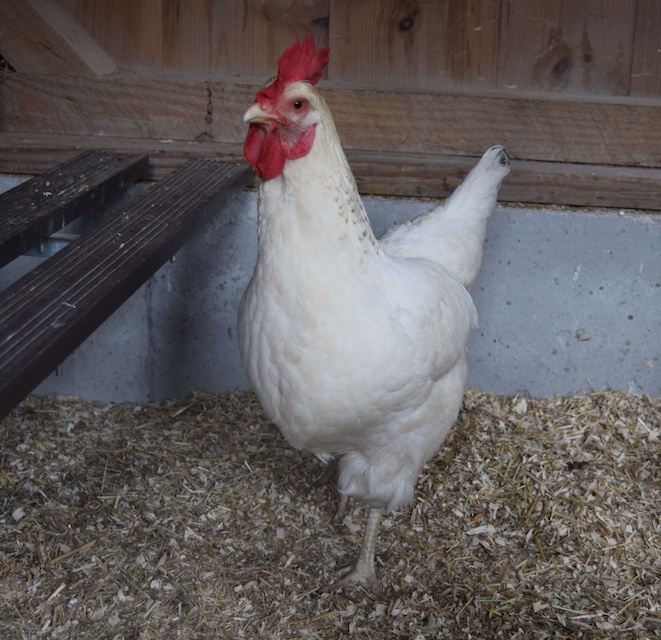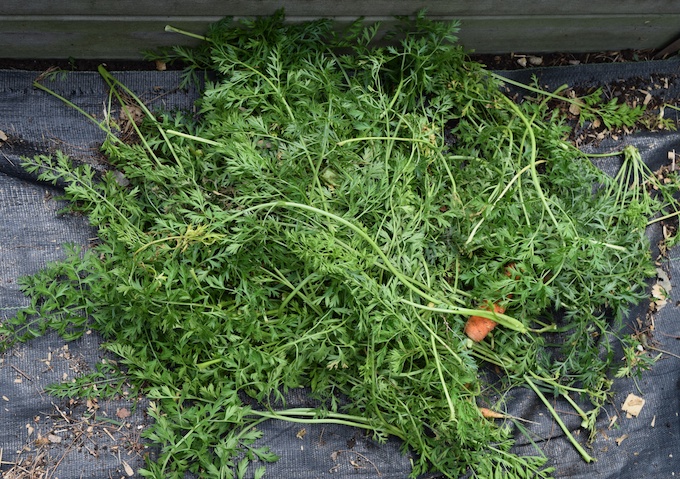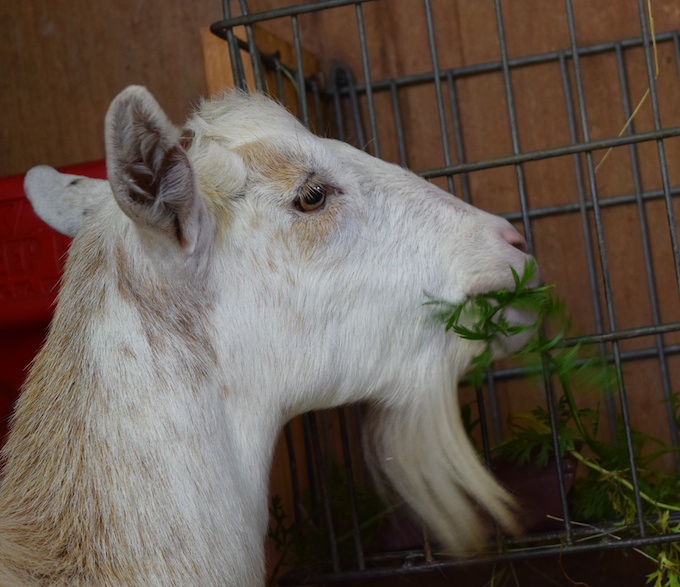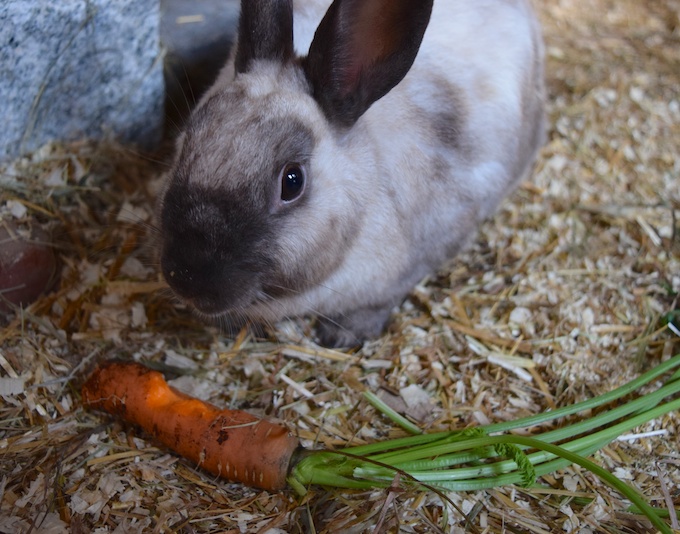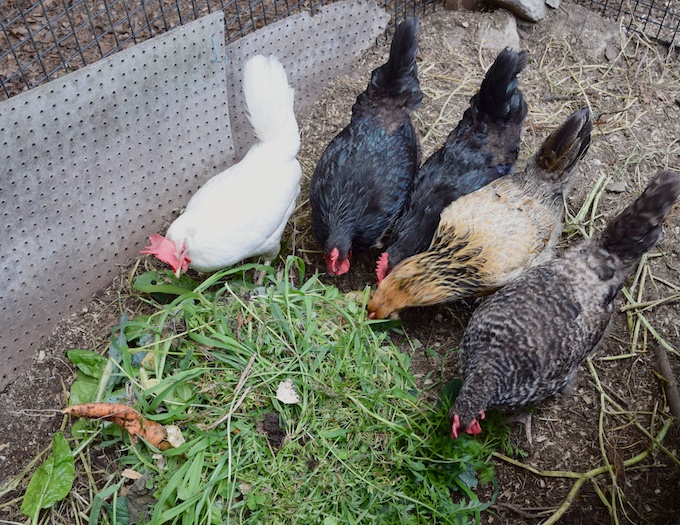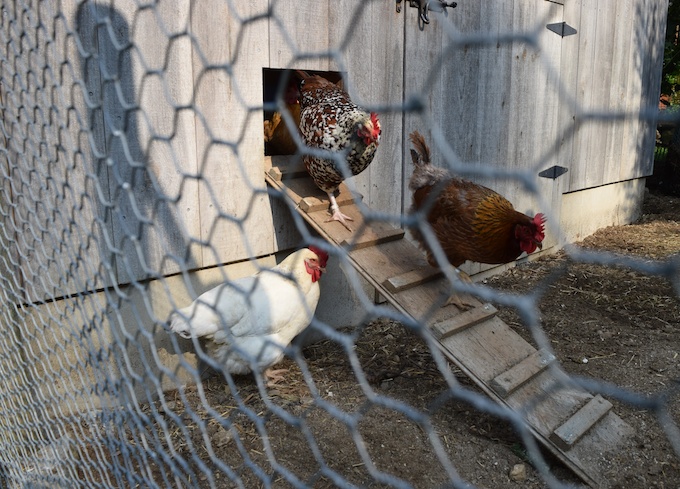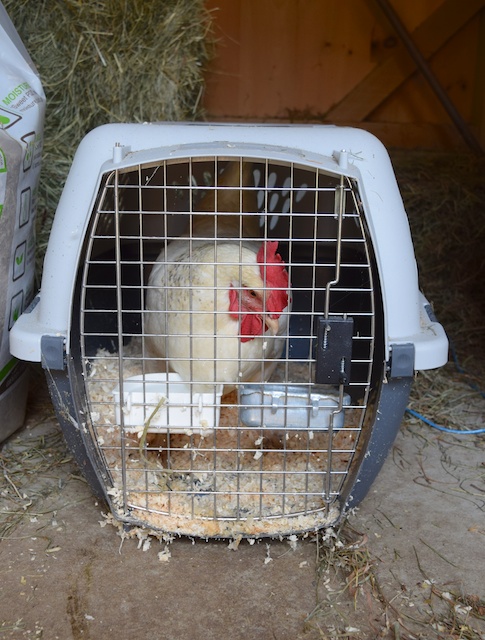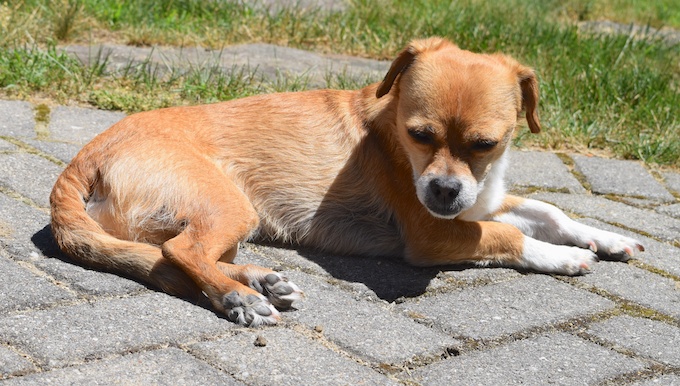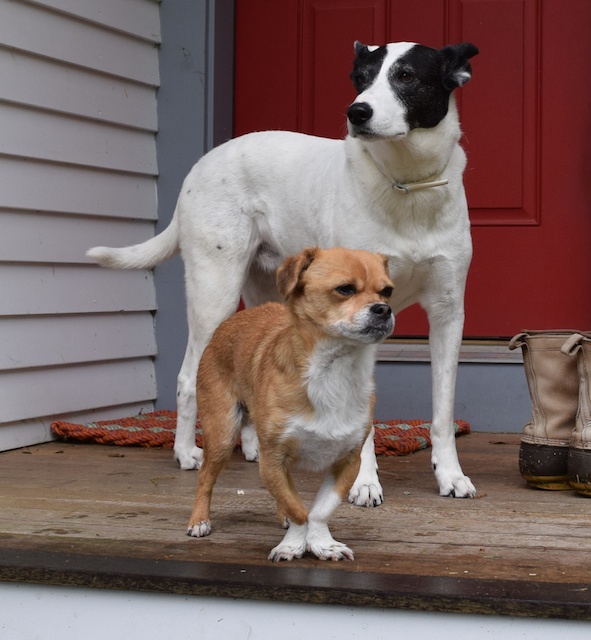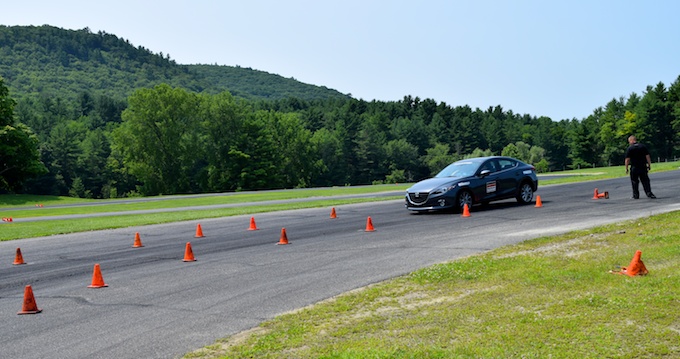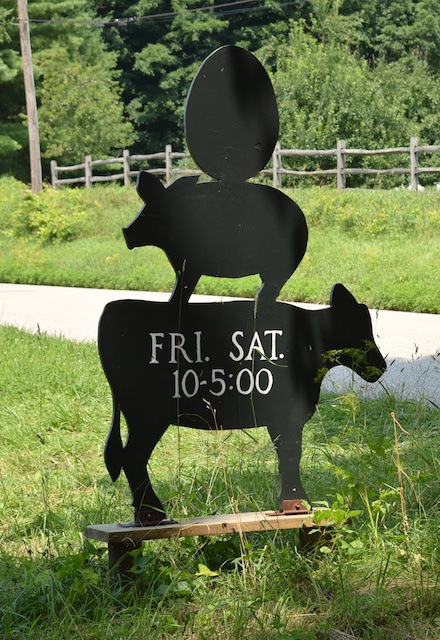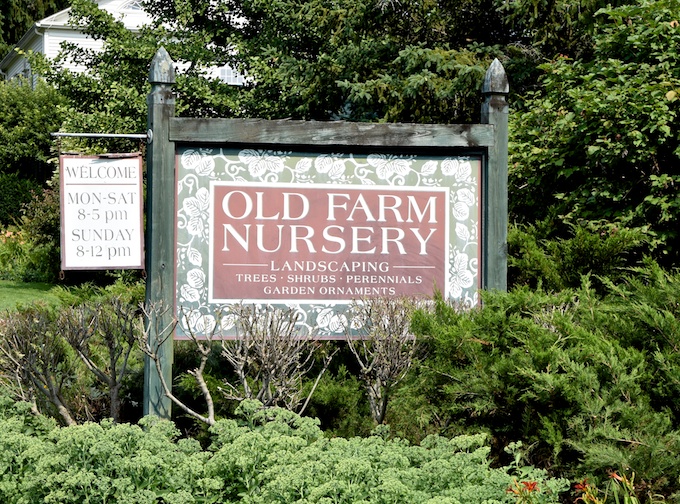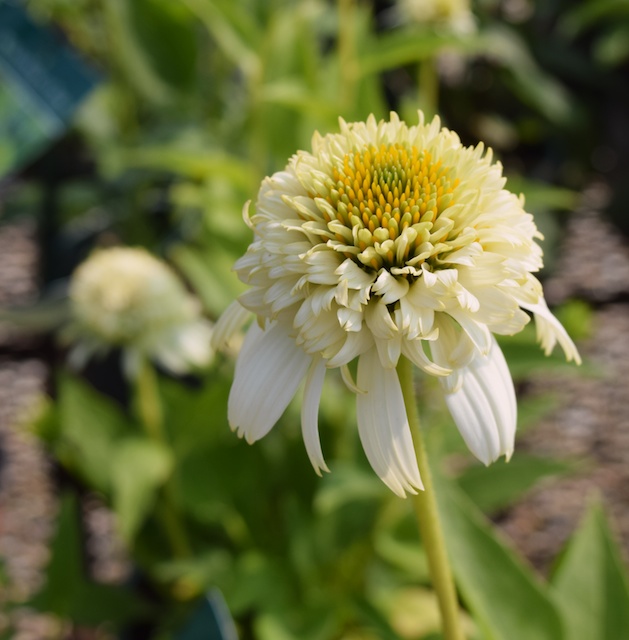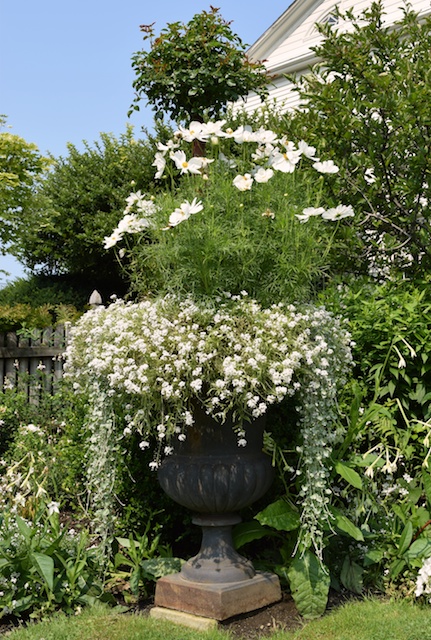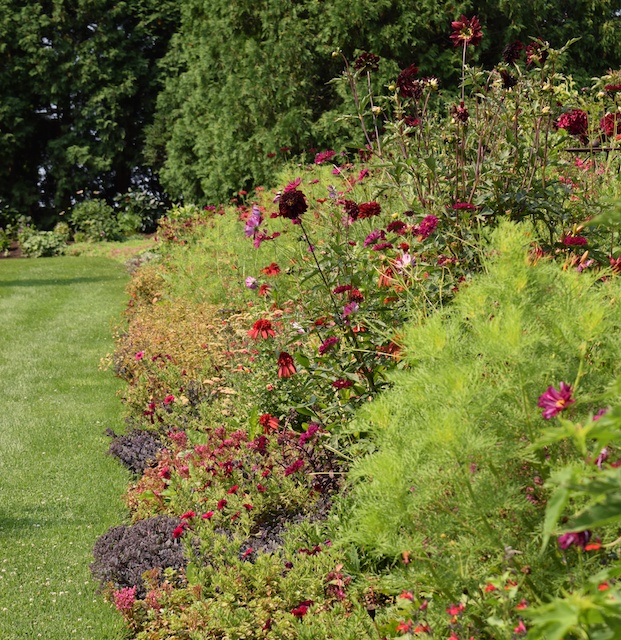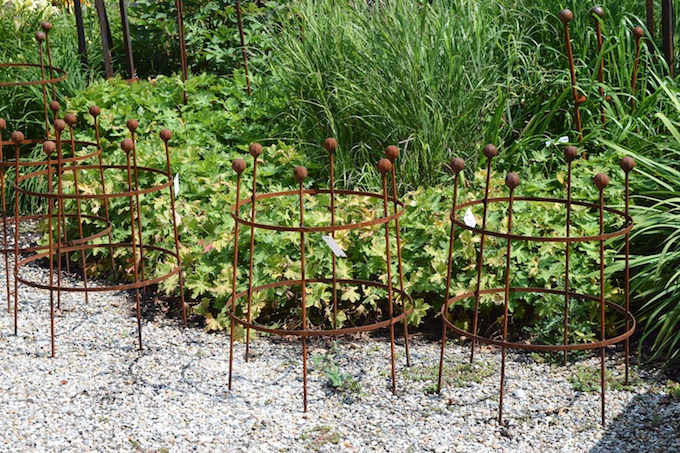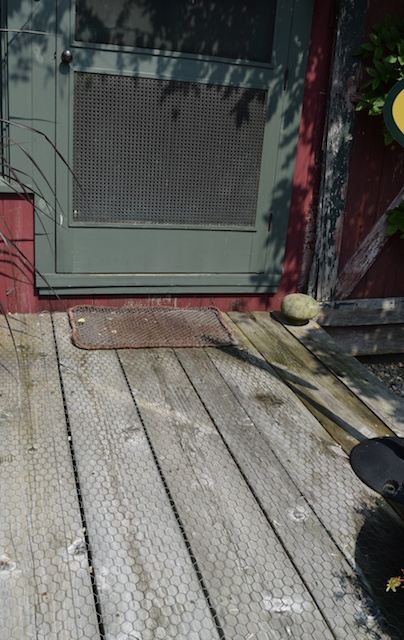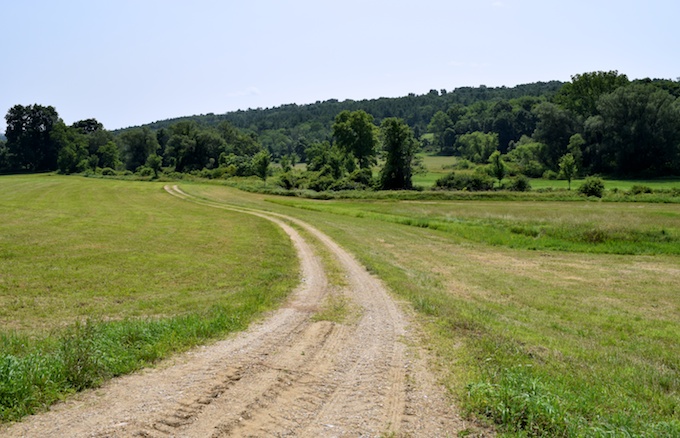I didn’t need to isolate Opal for more than six hours to decide the next course of action. (To read why I isolated this hen, start here.) This is what I learned:
Although Opal would occasionally stand like a penguin, most of the time, she had a normal posture.
Although at first Opal was lethargic, within an hour she kicked the shavings out. She ate and drank.
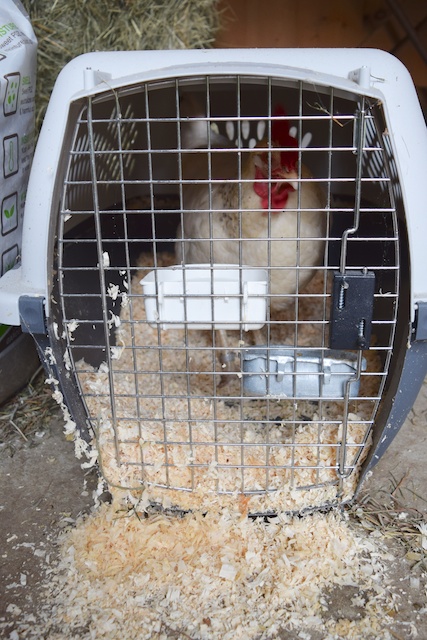
It was four hours before she passed manure (which is a long time for a chicken) but the feces were normal in color, size and firmness. This was very good to see. Diarrhea and stringy black, or worse, green, manure is an indication of serious problems.
However, Opal did not lay an egg.
There was nothing more to learn. I put her back in the with flock. The next morning, Opal looked okay. If I hadn’t seen her off behavior the day before, I wouldn’t have noticed the subtle lack of vigor that she still presented. My best guess, and it is only a guess – don’t believe anyone who gives you a definitive prognosis in a case like this – is that there is some sort of glitch going on in her reproductive tract. The good news is that Opal doesn’t have an infection, and it’s not yet life-threatening. Perhaps there is a malformed egg inside of her that she needs to expel. Perhaps she internally laid an egg. (The reproductive tract is not a closed system, and eggs can and do drop into the abdominal cavity.) Perhaps she was briefly constipated. All of those issues can be alleviated by a simple therapy, an epsom salt soak.
I’m not one for most “natural” or herbal remedies (I’m quite the skeptic) but epsom salts truly are a cure-all for many minor ailments. It’s the basis of my spa treatment. Epsom salt is a combination of magnesium and sulfate. You can find it in the pharmacy, as it’s used by people as a laxative and as a foot soak. For such a simple and inexpensive product, it has many curative functions. The magnesium improves circulatory health, flushes toxins, improves muscle and nerve function, maintains the proper level of calcium in the blood (very important for hens!) and increases oxygen use. The sulfates help form brain tissues and joint proteins, creates mucin proteins that line the digestive tract, detoxifies contaminants, and improves absorption of nutrients. Obviously, it’s a general and potent cure-all. Fortunately, it is absorbed readily through the skin, which makes treatment with it easy.
I put 2 cups of epsom salts into a tub of very warm water. Some hens love a soak. Opal needed a gentle push with my hand to get down into the water. This is not a bath. You do not have to get the hen wet all over. It’s enough that the epsom salts reach the skin of her bottom.
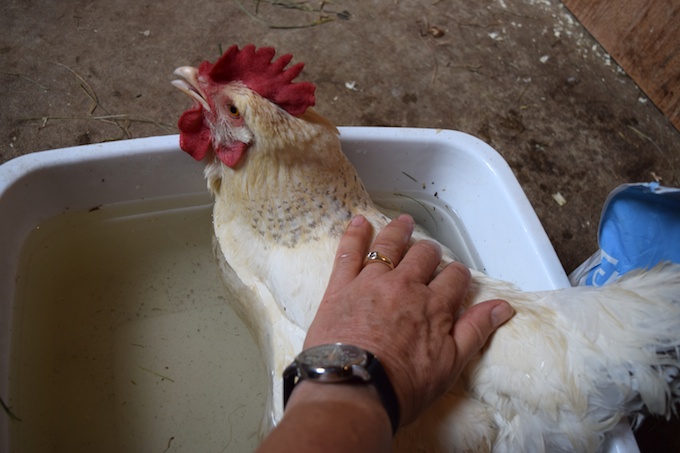
Once in the water, the hen usually settles and relaxes. Opal did.
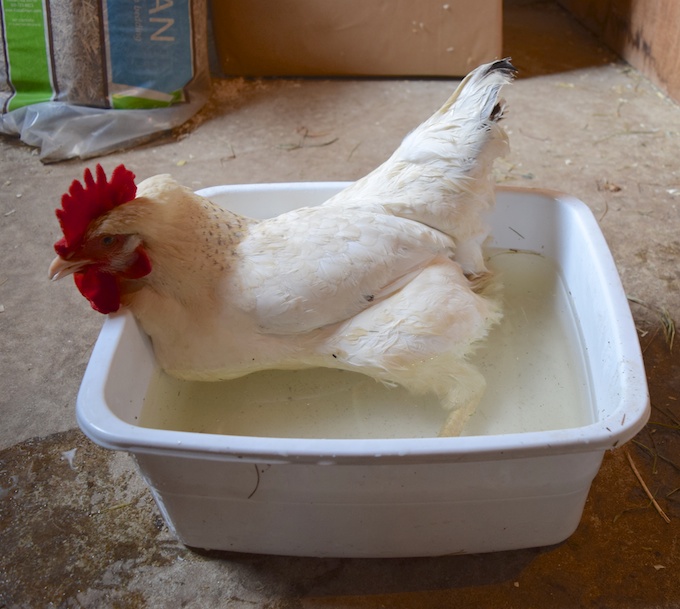
I let her soak until the water turned tepid, about 15 minutes.
Wet feathers allow you to take a good look at the vent area.
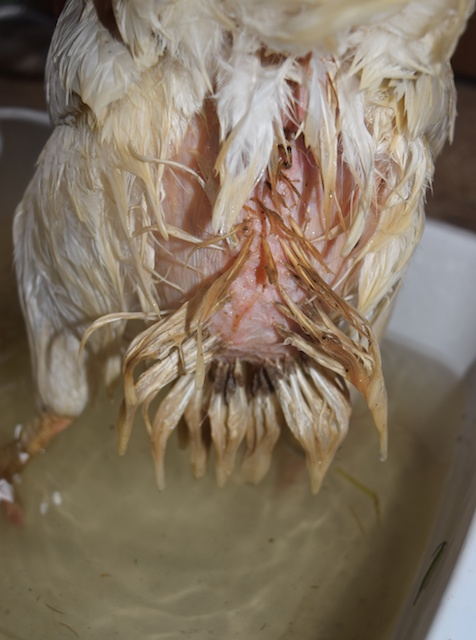
Many good layers, like Opal, have few feathers in that area. What looks like dirt at the base of the feathers are remnants from a winter’s lice infestation. The dark masses are egg cases. Opal doesn’t have any lice on her now that she is regularly dust bathing outside. Because hens molt only once a year, damage like this to feathers will remain long past when the original problem occurred. Don’t worry about it.
The vent area was not hot (a good sign that there’s not an internal infection), nor was it red or irritated. I palpated it. There were no hard masses, nor did it feel like a water balloon. That was also good. The vent itself was healthy-looking, which means it looked moist and soft. I was feeling encouraged that whatever had laid Opal low the day before was something that was not going to get worse, at least not for awhile.
On a cold day, after a soak, I blow dry the hen. But it was hot, and Opal was eager to rejoin the flock. She cared not a whit about how she looked, although a bit of preening was in order.

The following day Opal was fully active and social. Her comb is bright red, which is an encouraging sign. However, she still hasn’t laid an egg. Time will tell if she is all better. That’s the way it is with hens.
